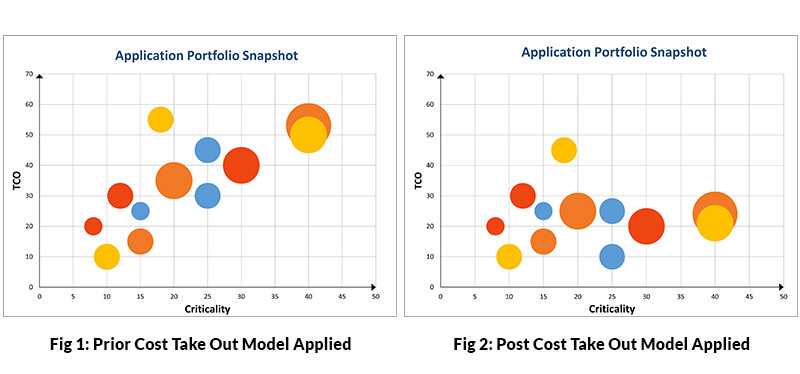Introduction
While there have been numerous literature on automation in rehosting aka lift-and-shift where the focus is on either the VM to VM (Virtual Machines) migration or the containerization of complete application as is, this blog focuses on digital leapfrogging for mass application cloud migration by using a cost takeout model and the benefits and risks thereof.
Lift-and-shift Application Cloud Migration
This may range from VM to VM as is lift-and-shift of applications from on-premises to cloud or containerizing the existing legacy monolithic application to the cloud. This approach is arguably one of the most popular and least-risk migration strategies, where there are minimal changes to the application code. For the mission-critical/ business lifeblood/ tier 0/ tier 1 applications or COTS products, this may be the most suitable cloud migration strategy.
Below are some of the disadvantages of this approach:
- For VM to VM migration, the application infra remains nearly the same (unless optimized) as was in the on-premises. This results in a similar or minimal cost benefit from infrastructure cost savings.
- For VM to VM migration or containerization, cloud migration of legacy monolithic application as-is is generally done by retaining the same application software platforms (application server/ middleware and database servers). Hence, the containerization may not result in any substantial software license savings. In a few scenarios for legacy applications on commercial large on-premises application software platforms, this may add even more complexity on the cloud.
- For VM to VM migration or containerization of monolithic applications as-is, it may not result in agility and high velocity releases (a feature of cloud) because of the monolithic nature of the legacy applications where DevOps releases also may be mostly at the complete application level.
Application Cloud Migration by Using a Cost Takeout Model
If the monolithic legacy applications can be broken down into smaller independent API-enabled service applications, and containerized and migrated to cloud on light-weight free cloud-native software application platforms (application server, middleware and database), the following can be the key advantages:
- Save application software licensing cost and realize huge TCO reduction
- Reap the benefits of pay-as-you-go serverless cloud infrastructure, resulting in additional cost savings on infrastructure
- Easily integrate with cloud PaaS solutions like AI/ML, data analytics, and security
- Enable more applications to use API economy
- Realize enhanced applications’ agility with high-velocity releases of the service-based applications

Challenges in Application Cloud Migration by using a Cost Takeout Model
Below are some of the challenges in application cloud migration by using a cost takeout model:
- For a large application portfolio cloud migration, breaking down monolith into smaller independent API-enabled service applications is no trivial work
- Enabling API of each of the independent smaller applications may require heavy code refactoring
- Integrating the APIs with the original application user interface/ messaging interfaces may require significant time and effort
- DevOps enablement for each independent smaller application may require substantial test automation effort
- Containerization of each independent application may require considerable skill of container platforms like Docker/ Kubernetes
- Since the approach requires much code change, a good amount of testing is imperative
Importance of Automation in Application Cloud Migration by using a Cost Takeout Model
All these activities listed in the previous section when applied to a significantly large application portfolio, the effort and complexity may seem humongous and very risky. Apart from careful migration planning and proper migration strategies for successful rollout, manual process may be nearly impossible for such rollout. Mass application cloud migration and replatforming by using a cost takeout model may best be done by leveraging automation using any time-tested cloud platforms for minimizing the risk of failure or of the inability to reap true benefits of cloud migration.

At Hexaware, our application cloud migration “Center of Excellence” continuously analyzes application cloud migration market trends. After consulting with the decision-makers of our large clients and rigorous R&D, we have come up with an enterprise cloud adoption product suite “AmazeTM for Applications”. It uses AI, pattern-matching, and automation, and can automate cloud migration of legacy on-premise monolithic applications to cloud-native applications on any cloud for various industry sub-verticals like banking, capital markets, airlines, P&C, insurance, etc. It can help to transform business models as well as industry landscapes.
For more information, please write to marketing@hexaware.com



















